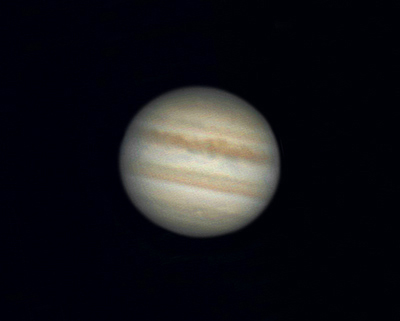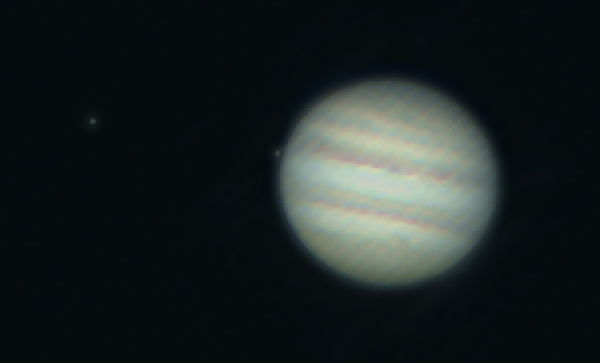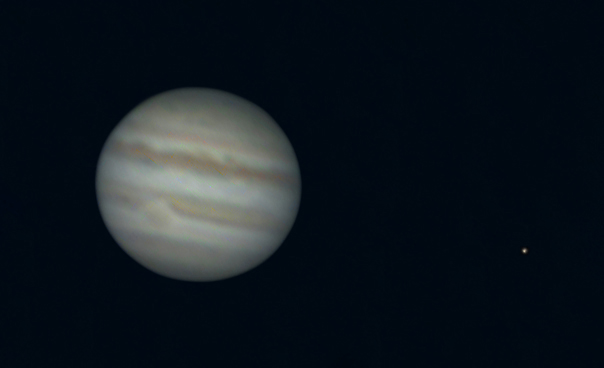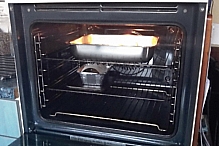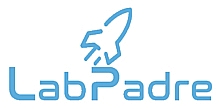Well, after many weeks of varied weather and cloudy nights, on Sunday evening the skies cleared and I went out for a quick spotting session to help plan what to view on Monday night, which was also forecast to be clear. I'm still not ready to start imaging DSOs yet, so I figured that some widefield observing and some Jupiter imaging would be reasonable objectives. Jupiter's the brightest object in the southern sky at the moment, but it only reaches 12° elevation when it passes through my "window of opportunity", so in order to view it from my garden I would have to finish decimating the overgrown privet hedge that blocks the prospect southwards. That was the job for Monday.
Monday evening arrived and things didn't look promising - plenty of high cloud was obscuring the sky, and I figured that if I couldn't get a consistent view of Polaris, I would have to abandon the session, as the scope's alignment routine depends on getting the mount aligned with the pole.
I was just about to give up when the clouds parted and the stars shone forth. I had about an hour before Jupiter was due to swing into view, so I took my time with the mount-alignment, ensuring that everything was set up as near to perfect as possible, then it was time to see the sights.
First up was a view of M8 (Messier 8, the Lagoon Nebula) in Sagittarius, before it went out of sight. Pretty impressive, I reckon. I could have tried to image it, but it escaped behind the house next door.
Next I decided that it was time to get the scope pointing at Jupiter, which was due to hit my field of view within the next 30 minutes. That set, I went in for a cuppa.
When I came back out, Jupiter was dead-centre in the eyepiece with some of the moons lined up like a string of pearls either side of the planet. Io was just grazing the edge of the disc, and later there was the shadow of Io on the face of the parent planet. Nice.
Soon the webcam was in place and it was taking 100-second .avi movies of the planet. I had zoomed right in with the 8mm setting on the eyepiece, this gave a magnification of x125, and I was projecting the image onto the webcam chip about 70mm away. This gave a large image but because the planet was so low, it appeared just above the rooftops, and the heat from them was causing a lot of shimmering. Short exposures would be needed, so I settled for 15 fps. The .avis were processed later, and the best image produced from them so far is this:

Jupiter, with a hint of Great Red Spot (lower-left) and the shadow of Io (upper-left)
After that, I put away the webcam and attached the Nikon D50 instead, still using the eyepiece-projection method, and rattled off a selection of wider-field shots of the planet with some of its moons. I had to use longer exposures to get the moons, and shorter ones to get Jupiter, so the images produced are composites. The best one of these is:
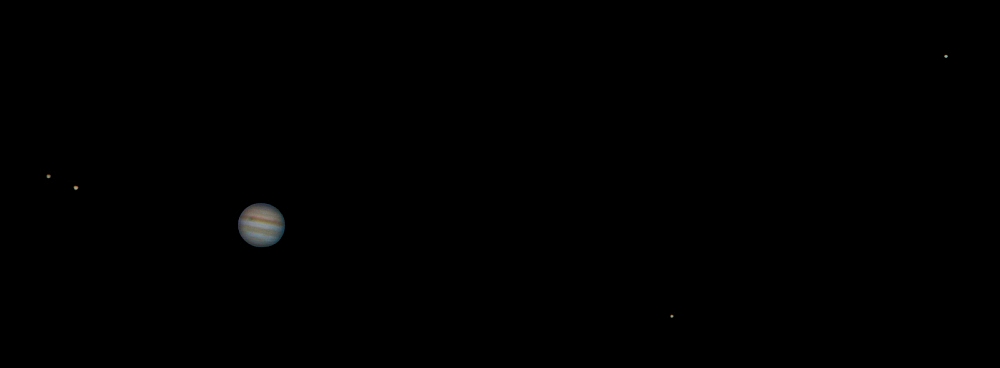
Left to right: Europa, Ganymede, Jupiter, Callisto.
Io is in transit across the face of Jupiter, but it's lost in the background.
The object in the top-right corner is a star.
After a couple of hours of this, Jupiter passed out of sight so it was time to look at something else before the skies became too light. I had a look at Winstars and figured that Neptune, a planet reluctant to appear before us, might be in shot after a short wait. I slewed the scope to point at it but it was behind some trees. No matter, it was time for another brew anyway.
Neptune's not visible to the naked eye, so I had a look for it through my trusty binoculars. I found the row of three stars that currently acts as a marker for locating the planet, and, by using averted vision, could just make out a very faint dot of light where Neptune should be. Encouraged by this, I waited until the area was in sight, and took a short series of zoomed-in long exposures of the seemingly-empty area of blackness, hoping that the results would be in focus (none of the marker stars were bright enough to show up in the viewfinder, it was hit-and-hope stuff). I had to stop soon, though, as the sky was just too light, and the morning dew was beginning to form on the optics. The session was over, and I was convinced that I had failed to capitalise on this unplanned opportunity.
I packed away and headed inside to warm up. While swilling down a hot cuppa, I had a quick look at the pics that might have included Neptune, and there it was, a small blue fuzzy ball! It needed a lot of processing to get rid of the noise and other defects caused by the optics and the atmospheric conditions, but I ended up with this:

Neptune (the tiny blue dot to the right of centre), and 2 of the 3 marker-stars.
Next time out, I'll try for a better picture. It'll be easier now that I know where to look and what camera settings to use.

